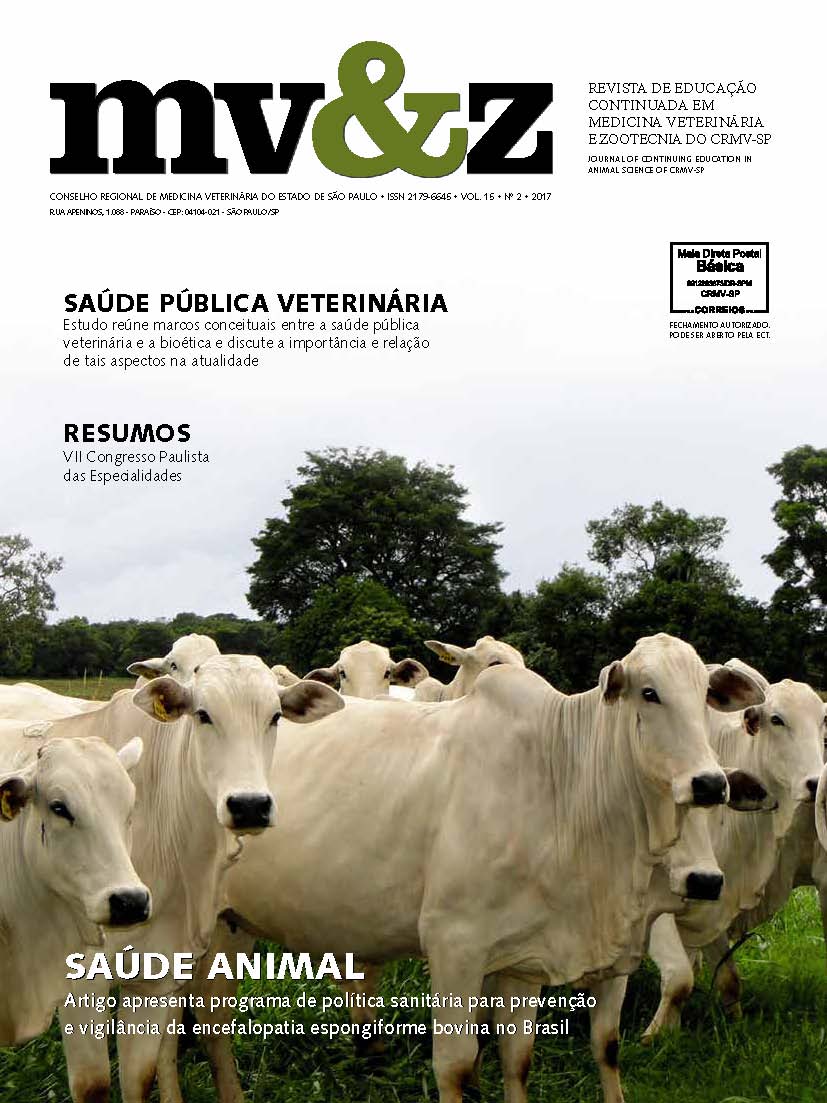Anesthetic protocol for flexural deformity correction in a foal: case report
Main Article Content
Abstract
A 14-day-old female quarter foal weighing 68kg was sent to Faculdades Integradas de Ourinhos Veterinary Hospital for correction of bi-lateral flexural deformity (carpus valgus), using epiphysiodesis technique by bilateral screw in thoracic limb. In preanesthetic evaluation the physiological parameters were: Heart Rate (HR) – 120bpm; respiratory rate (f) – 80bpm; dehydration – 0%; rectal temperature – 37.5°C; and strong and regular pulse palpation. As preanesthetic medication, detomidine (5μg/ kg) was administered. After 15 minutes, a 14 G catheter was introduced into the jugular vein and the patient was induced to anesthesia with propofol 1% (4mg/kg) IV, followed by intubation with an orotracheal tube and maintained under inhalational anesthesia with isoflurane. Subsequently, the ulnar, median and medial cutaneous nerves of the bi-lateral forearm were blocked, applied by 5mL of 2% lidocaine (w/v) at each point. The fluid therapy was instituted with Ringer lactate (3mL/kg/h). In the trans-anesthetic period, values for the studied variables (minimum and maximum) were HR – 55 and 85bpm; ƒ – 10 and 20bpm; retal temperature – 36,5 e 37,6°C; systolic blood pressure (SBP) – 40 and 65mmHg; diastolic blood pressure (DBP) – 20 and 30mmHg; mean arterial pressure (MAP) – 25 and 45mmHg; glycemia – 130 and 145mg/dL; oxygen saturation (SpO2) – 92 and 99; end tidal CO2 (ETCO2) – 47 and 71; and V% – 0.7 and 1.3. The anesthesia time was 90 minutes, in this gap there was hypotension (MAP<60mmHg), not responding to continuous infusion of dobutamine (0.2μg/ kg/min) IV. The anesthetic recovery time was 60 minutes and was assisted manually without any intercurrence. It was concluded that the medial ulnar, medial and medial cutaneous nerves blocks of the forearm were efficient to perform the surgical technique since the vaporization of the inhalation anesthetic remained below the values for 1 minimum alveolar concentration for the species.
Article Details
1. Autores mantém os direitos autorais e concedem à revista o direito de primeira publicação, com o trabalho licenciado sob a Creative Commons Atribuição-NãoComercial-SemDerivações 4.0 Internacional
2. Autores têm autorização para assumir contratos adicionais separadamente, para distribuição não-exclusica da versão do trabalho publicada nesta revista (ex.: publicar em repositório institucional ou como capítulo de livro), com reconhecimento de autoria e publicação inicial nesta revista.
3. Autores têm permissão e são estimulados a publicar e distribuir seu trabalho online (ex.: em repositórios instituicionais ou na sua página pessoal) a qualquer ponto antes ou durante o processo editorial, já que isso pode gerar alterações produtivas, bem como aumentar o impacto e a citação do trabalho publicado (Veja O Efeito do Acesso Livre);
